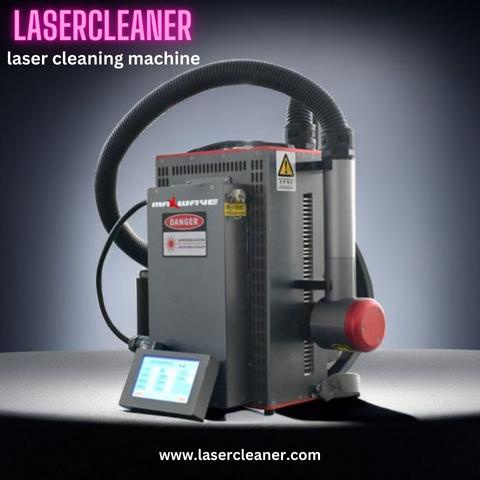Laser cleaning machines have emerged as a cutting-edge technology in surface restoration, offering a non-abrasive, precise, and eco-friendly method to remove contaminants, coatings, rust, and more from various surfaces. Their ability to efficiently clean without damaging the substrate has made them highly sought after in industries ranging from automotive and aerospace to conservation and restoration. In this comprehensive guide, we'll delve into the working principles, applications, advantages, and considerations for utilizing laser cleaning machine.
Working Principles: laser cleaning machine operate on the principle of using high-intensity laser beams to vaporize or ablate contaminants or unwanted layers from surfaces. The process involves focusing a laser beam onto the surface, which causes the contaminants to absorb the laser energy. This absorption leads to rapid heating and expansion, resulting in the disintegration or sublimation of the unwanted material, leaving behind a clean surface. The intensity, wavelength, and pulse duration of the laser are adjusted based on the type of material being removed and the surface being treated.
Applications:
- Industrial Maintenance: Laser cleaning is extensively used in industries for removing rust, paint, coatings, and oxides from metal surfaces without causing damage.
- Conservation and Restoration: It's employed in art restoration to delicately clean paintings, sculptures, and artifacts without harming the original material.
- Automotive and Aerospace: Laser cleaning efficiently removes contaminants from engine parts, aircraft components, and molds without altering the substrate.
- Electronics and Semiconductor: Precise cleaning of delicate electronic components and semiconductors is achieved without using harsh chemicals that could damage the devices.
Advantages: a. Non-Destructive: Laser cleaning selectively targets contaminants without causing damage to the underlying substrate. b. Eco-Friendly: It eliminates the need for abrasive materials or chemical solvents, reducing hazardous waste and environmental impact. c. Precision and Control: Operators can precisely control the laser's intensity and focus, ensuring accurate cleaning in specific areas. d. Safety: Compared to traditional methods involving chemicals or abrasive materials, laser cleaning reduces health hazards for operators and eliminates the risk of surface damage.
Considerations: When utilizing laser cleaning machines, several factors should be considered, such as safety protocols, proper training for operators, understanding the material and surface being cleaned, and ensuring adequate ventilation to disperse any vaporized particles.
Conclusion: Laser cleaning machines have revolutionized surface restoration by providing a highly effective, precise, and environmentally friendly cleaning method across diverse industries. Understanding their working principles, applications, advantages, and necessary considerations is crucial for maximizing their efficiency and ensuring safe operations.


No comments yet